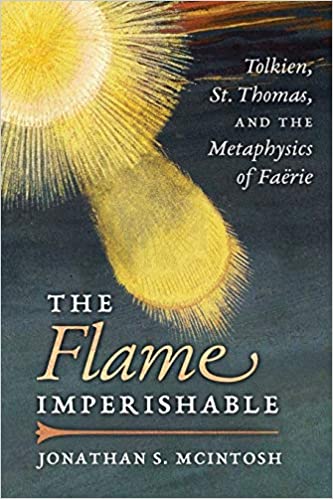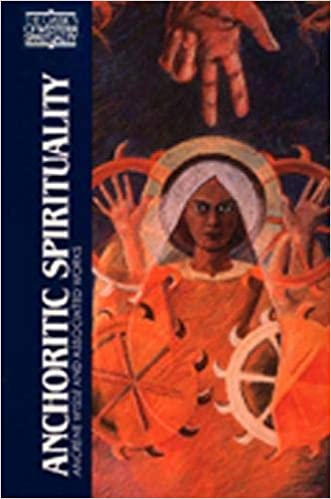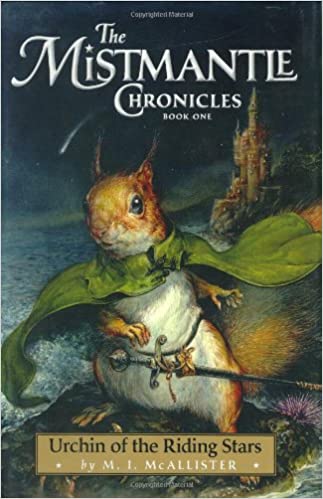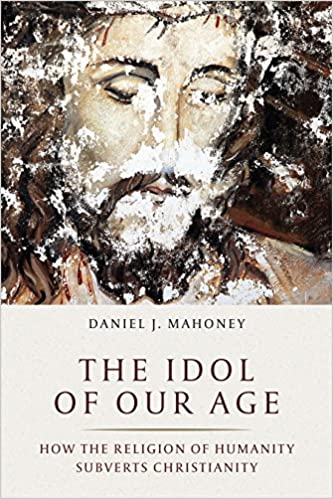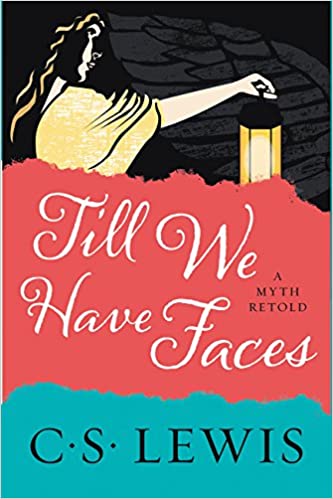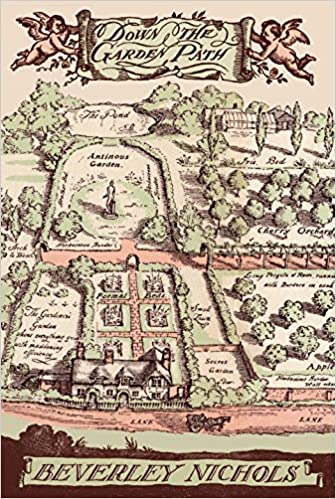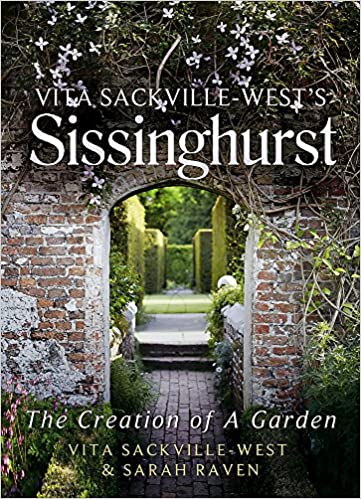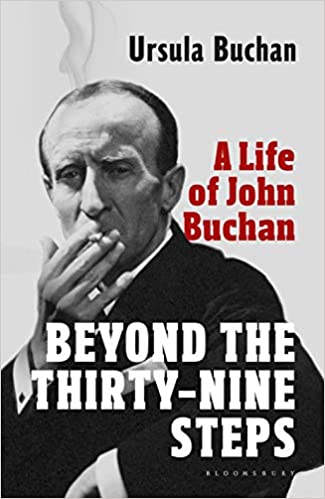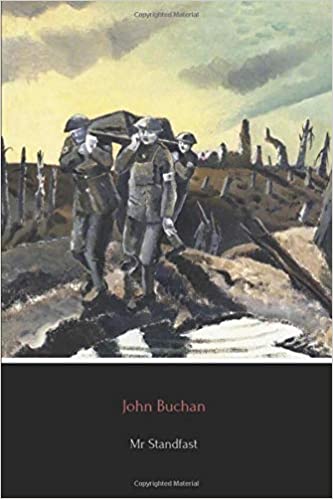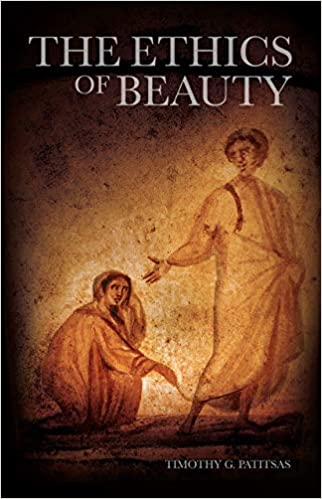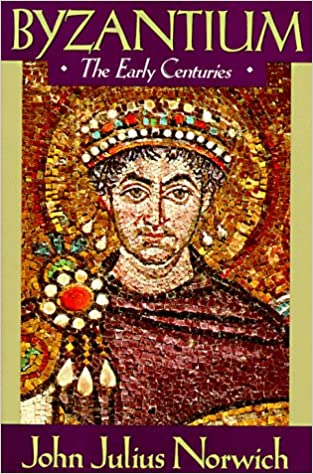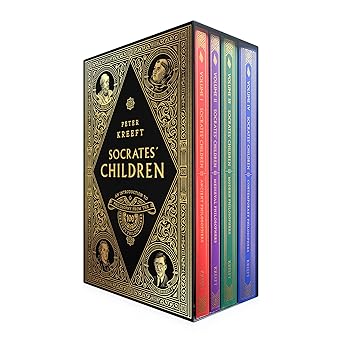The Flame Imperishable
J. R. R. Tolkien was a profoundly metaphysical thinker, and one of the most formative influences on his imagination, according to this new study of his works, was the great thirteenth-century theologian, St. Thomas Aquinas. Structured around Tolkien’s Middle-earth creation myth, the Ainulindale, The Flame Imperishable follows the thought of Aquinas as a guide in laying bare the deeper foundations of many of the more familiar themes from Tolkien’s legendarium, including such notions as sub-creation, free will, evil, and eucatastrophe. More than merely using Aquinas to illuminate Tolkien, however, this study concludes that, through its appropriation of many of the philosophical and theological insights of Aquinas, what Tolkien’s literary opus achieves is an important and unique landmark in the history of Thomism itself, offering an imaginative and powerful contemporary retrieval, interpretation, and application of Thomistic metaphysics for the twentieth and twenty-first centuries.
More info →Anchoritic Spirituality
English-speaking Christians owe Paulist Press an enormous debt of gratitude for their continuing efforts to help us gain a deeper appreciation of our spiritual heritage. Spiritual Life In one series, the original writings of the universally acknowledged teachers of the Catholic, Protestant, Eastern Orthodox, Jewish and Islamic traditions have been critically selected, translated and introduced by internationally recognized scholars and spiritual leaders. ANCHORITIC SPIRITUALITY-ANCRENE WISSE AND ASSOCIATED WORKS translated and introduced by Anne Savage and Nicholas Watson preface by Benedicta Ward Therefore this is written in the gospel about the three Marys, Ut venientes ungerunt Iesum-non autem recedentes (Mark 16:1). "These Marys," it says, "these bitterness, were coming to anoint our Lord." They are coming to anoint our Lord-those things we suffer for his love-who stretches himself towards us as one who is anointed, and makes himself smooth and soft to touch. And was he not himself a recluse in Mary's womb? These two things belong to the anchoress: narrowness and bitterness. For the womb is a narrow dwelling, where our Lord was a recluse; and this word "Mary," as I have often said, means "bitterness." Ancrene Wisse (ca. 1225) Sometime in the first quarter of the thirteenth century a number of works were written for anchoresses, women who lived as religious recluses in cells adjoining churches. The most influential is Ancrene Wisse (A Guide for Anchoresses), which discusses in great detail the daily life of the anchoress, both outer-her prayers, her house, her food and clothing-and inner-her attitudes to everything she is and does. Holy Maidenhood, a treatise on virginity, praises the freedom and joy of the unmarried state of the anchoress, providing a series of arguments to support her in her way of life when she may be tempted to leave it. Sawles Warde (The Soul's Keeping) looks at the pains of hell and the joys of heaven as recounted by two messengers, Fear and Love of Life. The passions of three early virgin martyrs, Katherine, Margaret and Juliana provide models of heroic strength and determination in the face of bribery, argument and torture by disappointed would-be lovers, who demand the virgins' renunciation of their new Christian faith. The Wooing of Our Lord is the longest of several short prayers and meditations which court the anchoress, body and soul, on behalf of Christ as lover. Together, the works give us an extraordinarily detailed sense of a powerful, multi-faceted spirituality which is in most respects quite different from that of the later and better-known fourteenth-century English mystics. This is the first time all of these works have appeared together in print.
More info →Urchin of the Riding Stars (The Mistmantle Chronicles, Book 1)
The start of an exciting new trilogy, Urchin of the Riding Stars is an epic, Shakespearian story of murder, treachery and revenge set on the island of Mistmantle, a world of squirrels, otters, and moles.
More info →The Idol of Our Age
This book is a learned essay at the intersection of politics, philosophy, and religion. It is first and foremost a diagnosis and critique of the secular religion of our time, humanitarianism, or the “religion of humanity.” It argues that the humanitarian impulse to regard modern man as the measure of all things has begun to corrupt Christianity itself, reducing it to an inordinate concern for “social justice,” radical political change, and an increasingly fanatical egalitarianism. Christianity thus loses its transcendental reference points at the same time that it undermines balanced political judgment. Humanitarians, secular or religious, confuse peace with pacifism, equitable social arrangements with socialism, and moral judgment with utopianism and sentimentality.
With a foreword by the distinguished political philosopher Pierre Manent, Mahoney’s book follows Pope Emeritus Benedict XVI in affirming that Christianity is in no way reducible to a “humanitarian moral message.” In a pungent if respectful analysis, it demonstrates that Pope Francis has increasingly confused the Gospel with left-wing humanitarianism and egalitarianism that owes little to classical or Christian wisdom. It takes its bearings from a series of thinkers (Orestes Brownson, Aurel Kolnai, Vladimir Soloviev, and Aleksandr Solzhenitsyn) who have been instructive critics of the “religion of humanity.” These thinkers were men of peace who rejected ideological pacifism and never confused Christianity with unthinking sentimentality. The book ends by affirming the power of reason, informed by revealed faith, to provide a humanizing alternative to utopian illusions and nihilistic despair.
More info →Till We Have Faces
C. S. Lewis—the great British writer, scholar, lay theologian, broadcaster, Christian apologist, and bestselling author of Mere Christianity, The Screwtape Letters, The Great Divorce, The Chronicles of Narnia, and many other beloved classics—brilliantly reimagines the story of Cupid and Psyche. Told from the viewpoint of Psyche’s sister, Orual, Till We Have Faces is a brilliant examination of envy, betrayal, loss, blame, grief, guilt, and conversion. In this, his final—and most mature and masterful—novel, Lewis reminds us of our own fallibility and the role of a higher power in our lives.
More info →Down the Garden Path
Down the Garden Path has stood the test of time as one of the world's best-loved and most-quoted gardening books. Ostensibly an account of the creation of a garden in Huntingdonshire in the 1930s, it is really about the underlying emotions and obsessions for which gardening is just a cover story. The secret of this book's success---and its timelessness---is that it does not seek to impress the reader with a wealth of expert knowledge or advice. Beverley Nichols proudly declares his status as a newcomer to gardening: "The best gardening books should be written by those who still have to search their brains for the honeysuckle's languid Latin name..." As unforgettable as the plants in the garden is the cast of visitors and neighbors who invariably turn up at inopportune moments. For every angelic Miss Hazlitt there is an insufferable Miss Wilkins waiting in the wings. For every thought-provoking Professor, there is an intrusive Miss M, whose chief offense may be that she is a 'damnably efficient' gardener. From a disaster building a rock garden, to further adventures with greenhouses, woodland gardens, not to mention cats and treacle, Nichols has left us a true gardening classic.
More info →Vita Sackville-West’s Sissinghurst: The Creation of a Garden
From 1946 to 1957, Vita Sackville-West, the poet, bestselling author of All Passion Spent and maker of Sissinghurst, wrote a weekly column in the Observer describing her life at Sissinghurst, showing her to be one of the most visionary horticulturalists of the twentieth-century.
With wonderful additions by Sarah Raven, Vita Sackville-West's Sissinghurst draws on this extraordinary archive, revealing Vita's most loved flowers, as well as offering practical advice for gardeners. Often funny and completely accessibly written with colour and originality, it also describes details of the trials and tribulations of crafting a place of beauty and elegance.
Sissinghurst has gone on to become one of the most visited and inspirational gardens in the world and this marvellous book, illustrated with drawings and original photographs throughout, shows us how it was created and how gardeners everywhere can use some of the ideas from both Sarah Raven and Vita Sackville-West.
More info →Beyond the Thirty-Nine Steps: A Life of John Buchan
John Buchan's name is known across the world for The Thirty-Nine Steps. In the past hundred years the classic thriller has never been out of print and has inspired numerous adaptations for film, television, radio and stage, beginning with the celebrated version by Alfred Hitchcock.
Yet there was vastly more to 'JB'. He wrote more than a hundred books – fiction and non-fiction – and a thousand articles for newspapers and magazines. He was a scholar, antiquarian, barrister, colonial administrator, journal editor, literary critic, publisher, war correspondent, director of wartime propaganda, member of parliament and imperial proconsul – given a state funeral when he died, a deeply admired and loved Governor-General of Canada.
His teenage years in Glasgow's Gorbals, where his father was the Free Church minister, contributed to his ease with shepherds and ambassadors, fur-trappers and prime ministers. His improbable marriage to a member of the aristocratic Grosvenor family means that this account of his life contains, at its heart, an enduring love story.
Ursula Buchan, his granddaughter, has drawn on recently discovered family documents to write this comprehensive and illuminating biography. With perception, style, wit and a penetratingly clear eye, she brings vividly to life this remarkable man and his times.
More info →Mr. Standfast
The second sequel to The 39 Steps!
Mr Standfast is the third of five novels by John Buchan featuring the character of Richard Hannay.
Recalled from duty on the Western Front by renowned spymaster Sir Walter Bullivant, British secret agent Richard Hannay goes undercover as a pacifist, working to outwit a dangerous German spy and his agents. Guided by his contact—and love interest—Mary Lamington, Hannay tracks his enemy from London to Glasgow to the Scottish Highlands, eventually confronting him in a dramatic climax above the battlefields of Europe.
The title refers to a character in John Bunyan's Pilgrim's Progress, to which there are many other references in the novel; Hannay uses a copy of Pilgrim's Progress to decipher coded messages from his contacts, and letters from his friend Peter Pienaar.
"A writer touched by genius." - The New Criterion.
More info →The Ethics of Beauty
Chaste and ardent eros for the Beautiful is the first task of human life, and falling in love with Beauty is the beginning of every adventure that matters …. In The Ethics of Beauty, Orthodox Christian theologian Timothy Patitsas first considers Beauty’s opposite, the dark events that traumatize victims of war and other ugly circumstances, and then invites us to rediscover the older Beauty-first response to moral questions and the integrity of the soul. Covering topics ranging from creation to political theory to the Jesus Prayer, including war, psychology, trauma, chastity, healthy shame, gender, marriage, hospitality, art, architecture, theology, economics, urban planning, and complexity theory, The Ethics of Beauty lays out a worldview in which Beauty, Goodness, and Truth are each embraced as indispensable elements of the best possible human life.
More info →Byzantium (I): The Early Centuries
Volume 1 of the series. Includes 32 pages of illustrations, and 11 maps and tables.
More info →Socrates’ Children Box Set
Peter Kreeft, esteemed philosophy professor and author of over eighty books, has taught college philosophy for sixty years. Throughout those decades, he yearned for a beginner's philosophy text that was clear, accessible, enjoyable, and exciting (perhaps even funny). Finding none that met those criteria, he eventually decided to write it himself.
In this four-volume series, Kreeft delivers, with his characteristic wit and clarity, an introduction to philosophy via the hundred greatest philosophers of all time. Socrates’ Children examines the big ideas of four major eras―ancient, medieval, modern, and contemporary―and immerses the reader in the “great conversation,” the ongoing dialogue among the great thinkers of history, including the most influential philosopher of all: Socrates, the father of Western philosophy.
Volume I: Ancient Philosophers investigates the foundations of philosophy laid by the ancient sages, Greeks, and Romans and introduces the philosophers who asked the first great philosophical questions―about good and evil; truth and falsehood; wisdom, beauty, and love; and the self, the world, and God.
Volume II: Medieval Philosophers studies the transformation of philosophy that came about due to an unprecedented figure―Jesus Christ―and considers the philosophers of the great monotheistic religions of Judaism, Christianity, and Islam as they sought to marry the Greek philosophical tradition with divine revelation.
Volume III: Modern Philosophers explores a philosophical world caught up in the spirit of the Enlightenment―a time of both scientific discovery and social upheaval―and examines the philosophers who sought above all to answer the great questions of epistemology and politics: What is knowledge? How can we be certain? What is society? What is its greatest good?
Volume IV: Contemporary Philosophers surveys the great philosophers of the nineteenth and twentieth centuries, an era of the splintering of philosophy into a variety of schools. Some, disconnected from the past, rebelled against the very endeavor of philosophy, but others, seeking to revitalize ancient conversations, returned to and renewed the deepest questions of meaning, happiness, and the human person.
More info →
